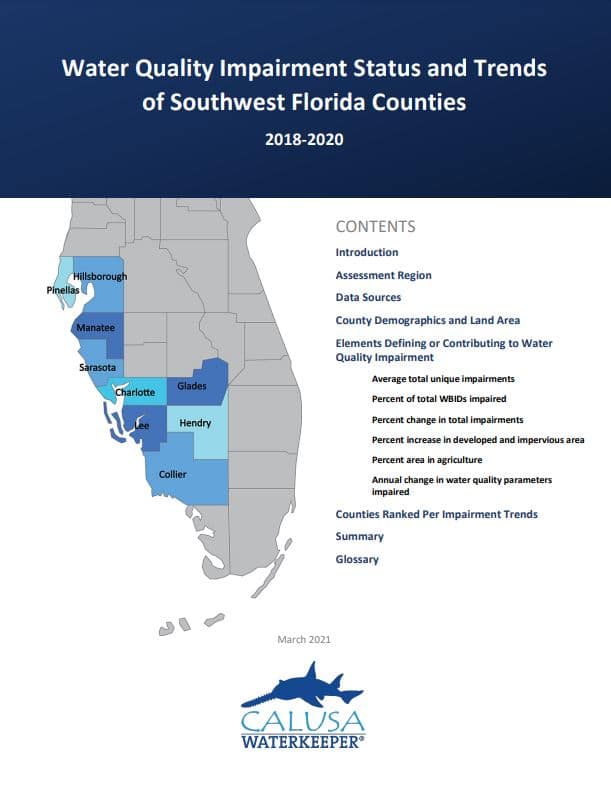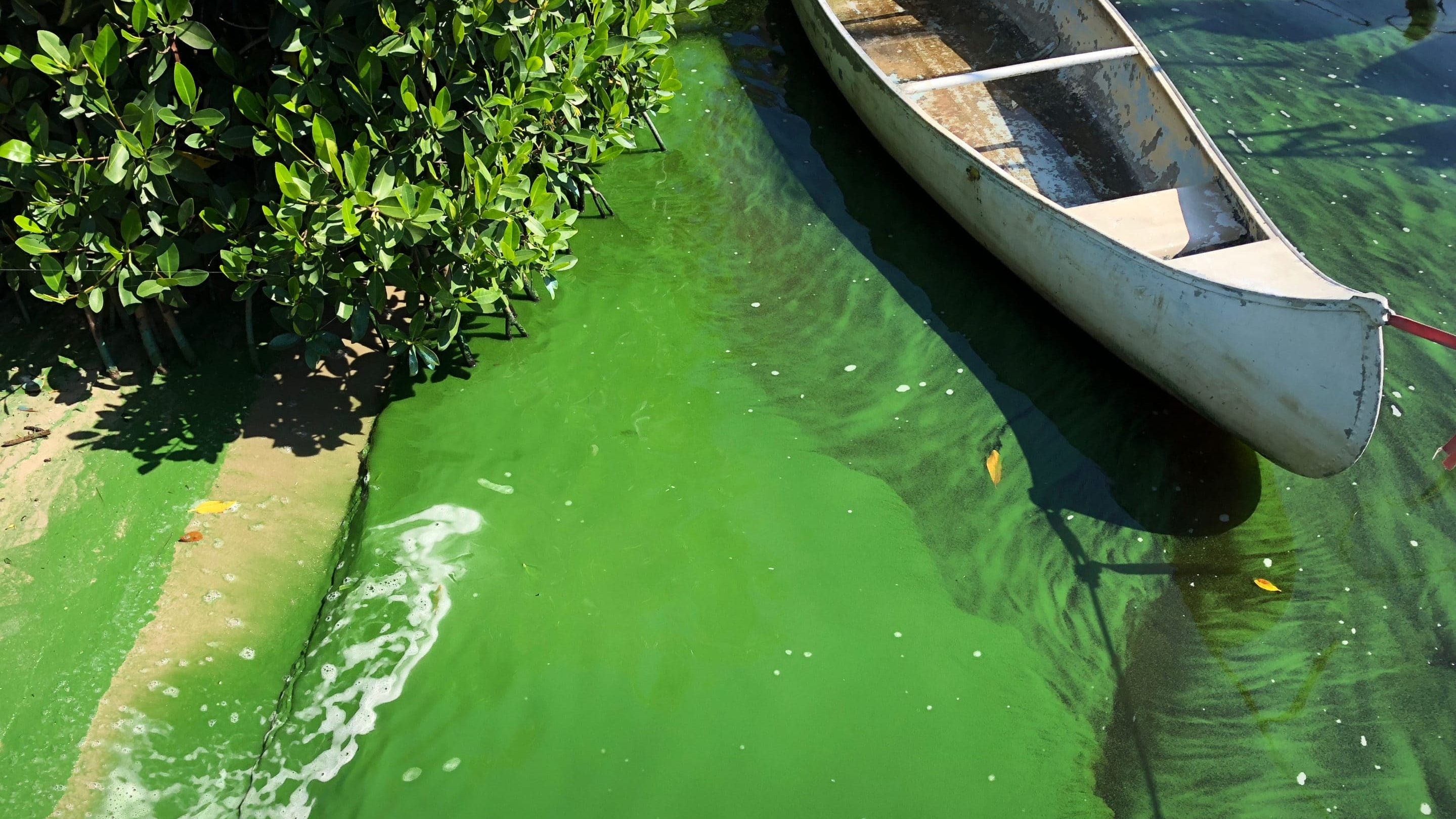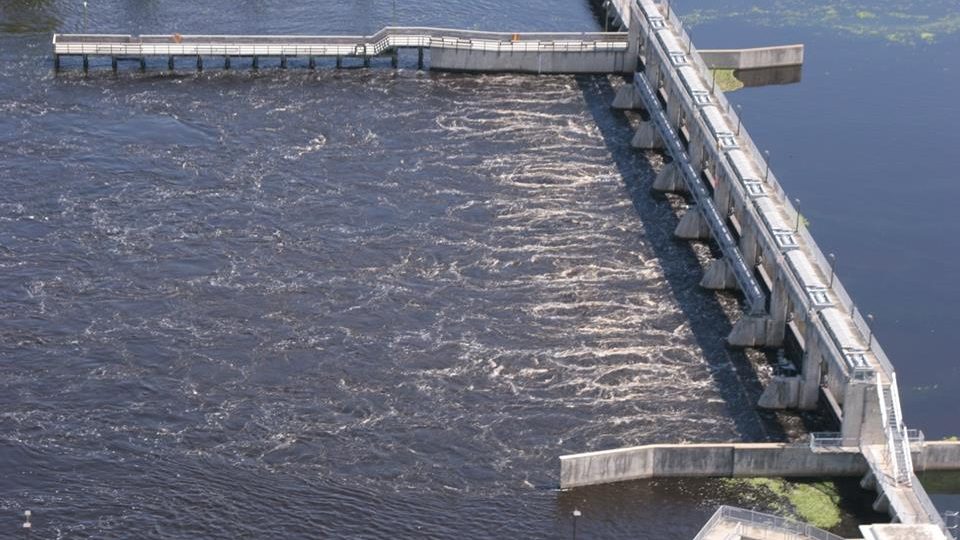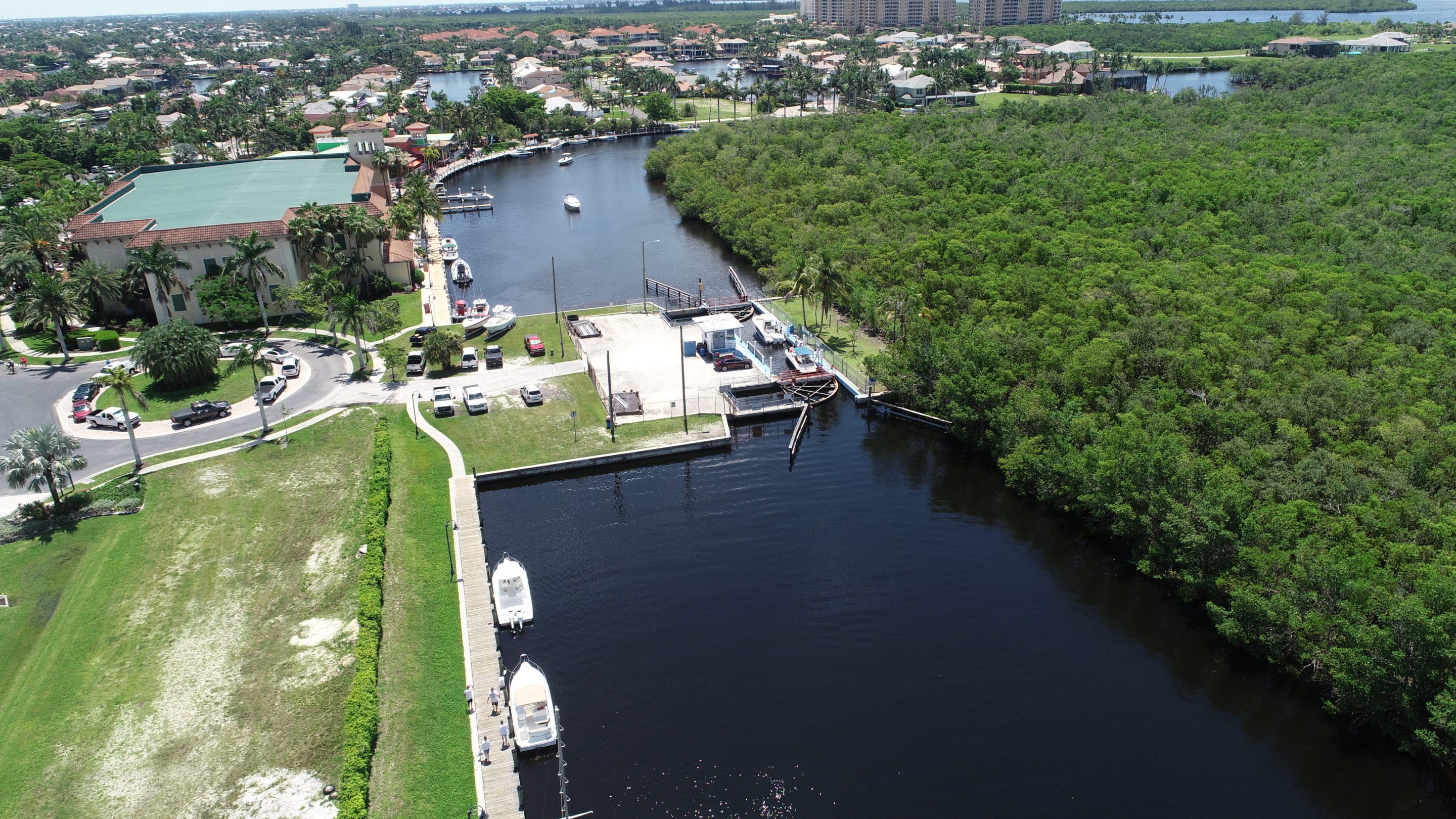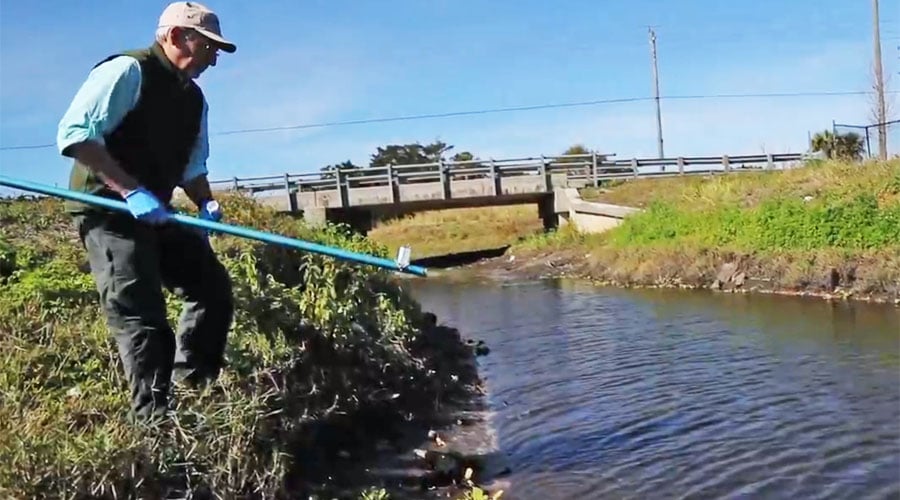Calusa Waterkeeper
Water Quality Report
Water Quality Impairments of Nine Southwest Florida Counties
Our Southwest Florida Water Quality Report
Understanding factors contributing to water quality impairment in Florida is important for determining sources and eventual planning for restoration.
The purpose of this assessment is to summarize water quality impairment in nine Southwest Florida counties between 2018 and 2020 using consistent assessment criteria gathered from FDEP’s (Florida Department of Environmental Protection) annual comprehensive verified list of impaired waters.
The counties included are Collier, Lee, Charlotte, Sarasota, Manatee, Hillsborough, Pinellas, Hendry and Glades.
Assessing water quality impairment on a geo-political basis, such as a county, is relevant in that most state-mandated restoration programs, such as Basin Management Action Plans, are implemented primarily by local government stakeholders.
About the Report
County Demographics and Land Area
- Among the nine counties assessed, population is largely independent of county land area
- Factors include local, state and federal land purchases for conservation along with high population density coastal communities
- Lee, Manatee, Collier and Hillsborough counties ranked as the highest rate of population increase respectively since 2018
- Population increase drastically raises the probability for increased water quality impairment
- Rapidly increasing impervious areas resulting from high growth rates and development accelerate stormwater runoff – a known contributor to water quality degradation

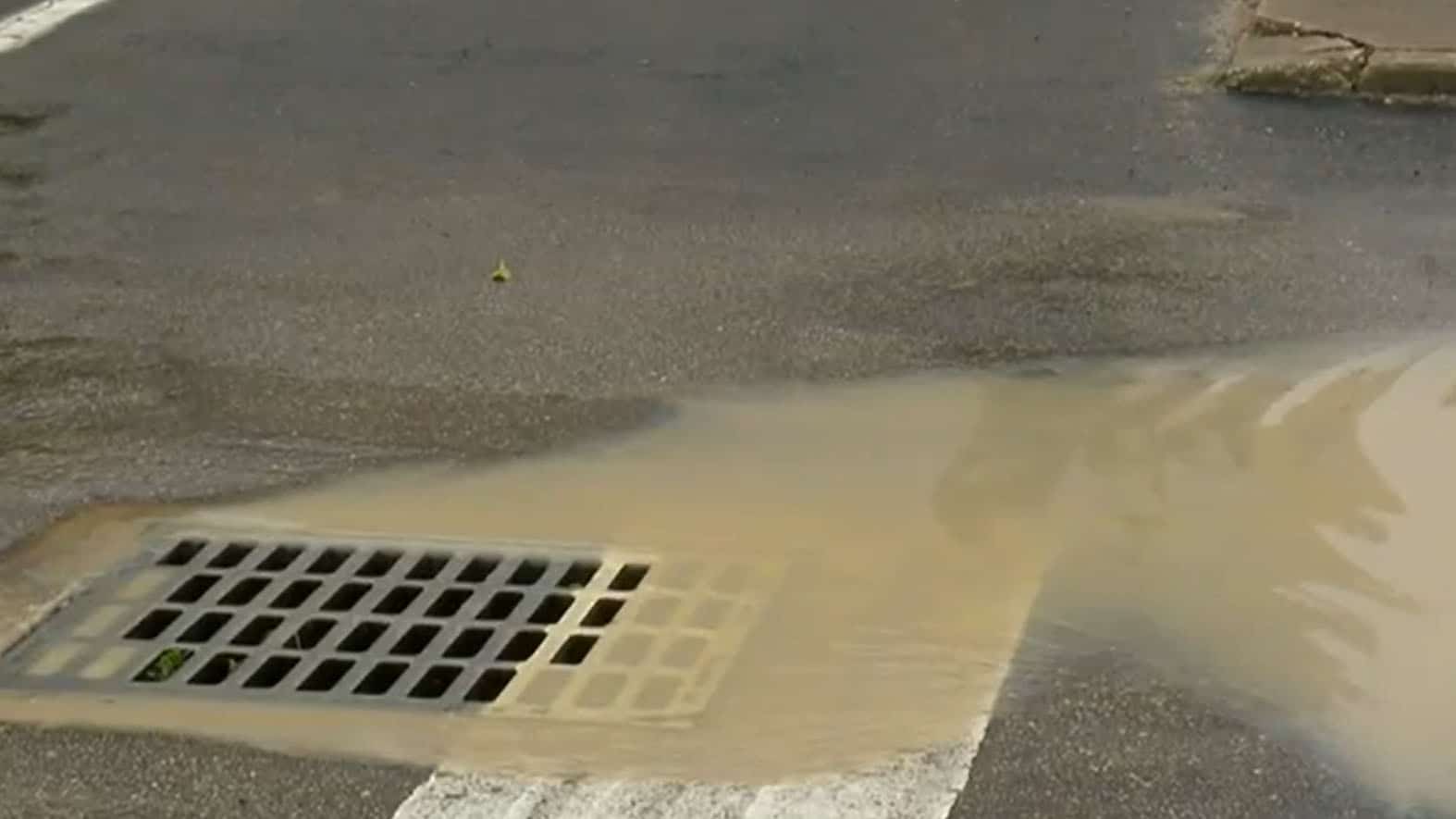
Water Quality Impairment Contributors
- Unique impairments help to establish a baseline for tracking cumulative change
- A waterbody can have multiple parameters verified as impaired by the FDEP
- Tracking the percent of total waterbodies impaired within a county can be an important component for understanding overall water quality status
- Comparing annual net change in total impairments ranks Lee County first at a 36% increase between 2018 and 2020
- Top factors that contribute pollutants to receiving waters include urban development and impervious area associated with development
Annual Change in Water Quality Parameters
- The four major impairments of waters within the nine-county region include fecal bacteria, nutrients, metals and dissolved oxygen (DO)
- Nitrogen and phosphorus are the primary nutrients that define impairment
- Fecal bacteria parameters include fecal coliform, E. coli and enterococci
- Representative metals that define impairment include iron, copper and lead
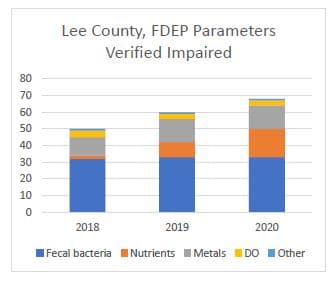

County Rank for Impairment Status
- Six metrics that define or contribute to water quality impairment were used to determine trends with respect to change in impairment status
- Each county was ranked for each of the six metrics and an average rank was calculated for determining the overall rank
- High-ranking counties (Manatee, Lee & Hillsborough respectively) indicate the greatest recent trend towards impairments and worsening water quality
Summary
Tracking water quality based on annual changes in verified impairment status should be considered a conservative, yet robust estimate of changes in water quality.
- Counties ranking highest for increased rate of water quality impairment were Lee, Collier, Manatee and Charlotte
- Counties ranking highest in population increase include Lee, Manatee and Collier
- Fecal bacteria is the most frequently occurring impairment parameter in six of the nine counties including Lee, Charlotte, Sarasota, Manatee, Hillsborough and Pinellas
- Nutrients represented the highest proportion of impairments in Collier, Glades and Hendry counties.
- Overall impairment trend ranked highest to lowest: Manatee, Lee, Hillsborough, Collier, Charlotte, Sarasota, Hendry, Glades, Pinellas

“Understanding factors contributing to water quality impairment in Florida is important for determining sources and eventual restoration planning. Assessing water quality impairment on a geopolitical basis, for instance, by county, is relevant as most state-mandated restoration programs, such as Basin Management Action Plans (BMAPs), are implemented primarily by local government stakeholders.”
More About Local Issues
Harmful Algal Blooms
Cyanobacteria & Red Tide
Cyanobacteria (blue-green algae) and Karenia brevis (red tide) have been making major impacts on Southwest Florida.
Lake Okeechobee Discharges
Revise System Operating Manual
The Caloosahatchee River often suffers from too much freshwater in the wet season, and not enough freshwater in the dry season.
Cape Coral Spreader Canals
Nutrient & Sediment Loading
The City of Cape Coral is working to remove large storm-water barriers to make recreational boating more convenient.
Bacteria Monitoring
Fecal Indicator Bacteria
Calusa Waterkeeper has been at the forefront of monitoring this Fort Myers tributary for fecal bacteria indicators.

























